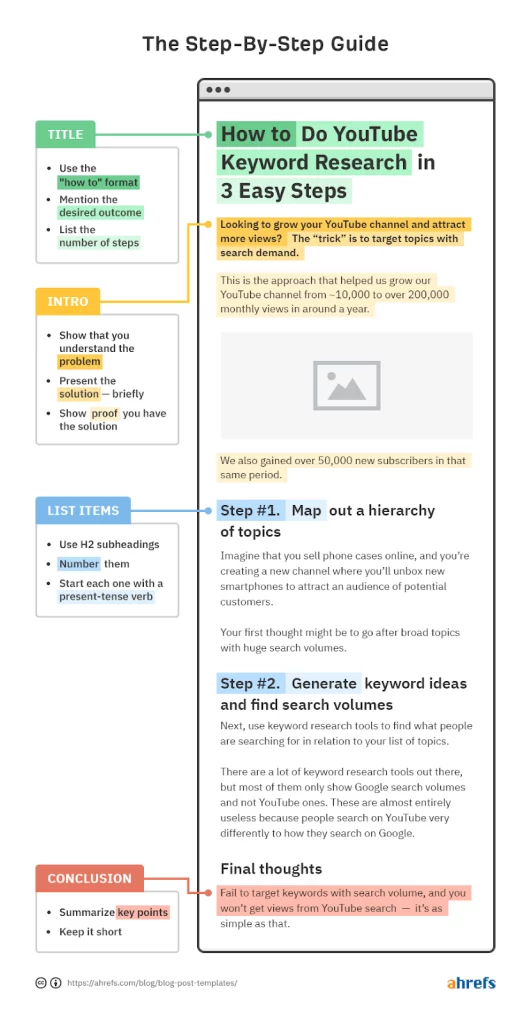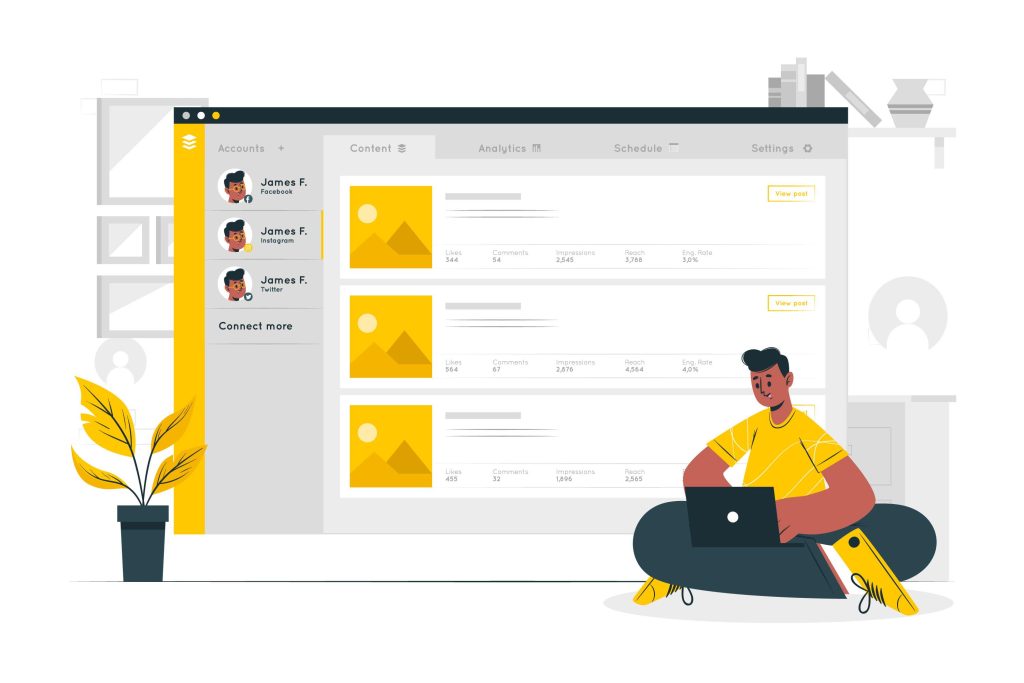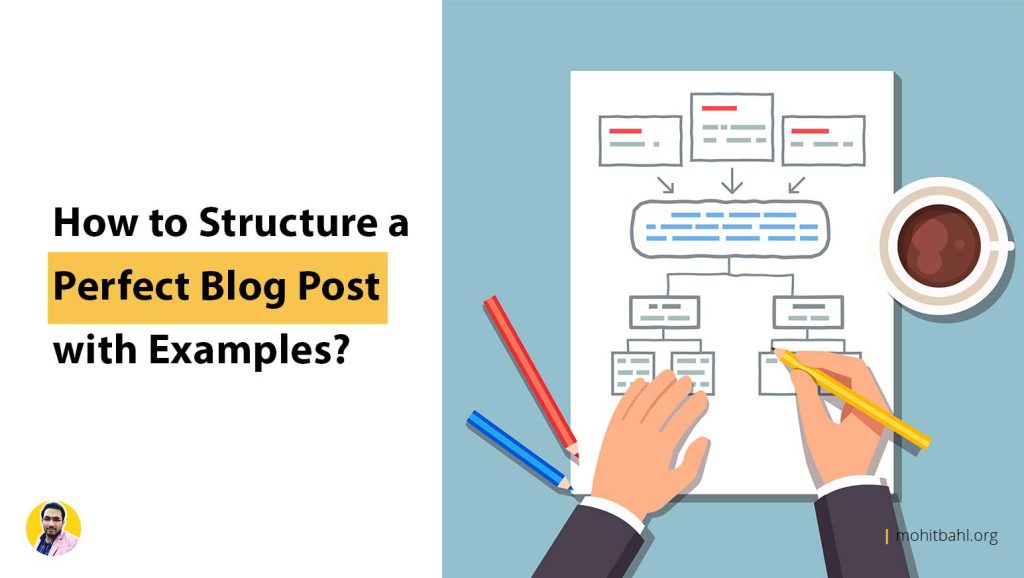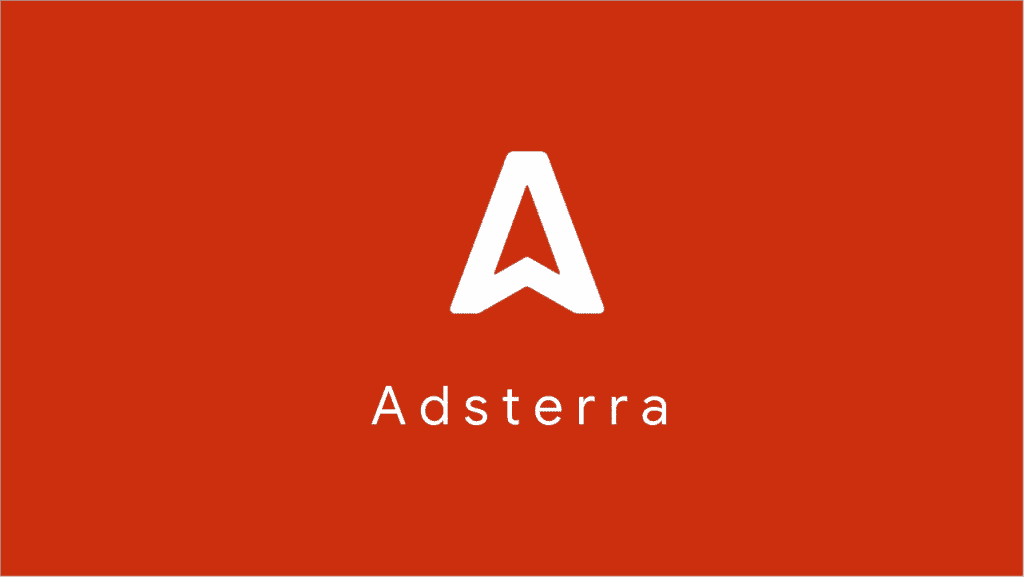A blog post is a piece of written content that is typically published on a blog, which is a website or online platform where individuals or organizations can share information, ideas, opinions, and stories.
Blog posts can cover a wide range of topics and are often used to inform, entertain, educate, or engage with an audience. They come in various formats, including text, images, videos, and more.
Structuring a perfect blog post involves organizing your content in a way that is engaging, informative, and easy for readers to follow. Here is a step-by-step guide on how to structure a blog post, along with examples:
The Structure of a Blog Post
Following is the exact basic structure of a good blog post.
Choose a Compelling Title
Your title should be attention-grabbing and give readers a clear idea of what to expect from your post. For example: 10 Tips for Healthy Eating on a Budget
Introduction
Begin with a captivating introduction that outlines the problem or topic you will address in your blog post. This section should hook the reader and provide a preview of what’s to come. For example:
Are you struggling to maintain a healthy diet while on a tight budget? In this post, we’ll share 10 practical tips to help you eat well without breaking the bank.
Subheadings


Break your content into sections with descriptive subheadings. Subheadings make it easy for readers to scan your post and find the information they’re looking for. For example:
- Plan Your Meals in Advance
- Buy in Bulk
- Shop Seasonal and Local
Use Paragraphs and Bullet Points
Keep paragraphs concise and use bullet points or numbered lists for key points or tips. This enhances readability. For example:
- Plan Your Meals in Advance
- Make a weekly meal plan.
- Create a shopping list.
- Stick to your list at the store.


Visual Elements
Incorporate images, infographics, and videos to break up text and make your content more visually appealing. For example, you can include a photo of a budget-friendly meal you’ve prepared.
Provide Examples and Evidence
Support your claims or tips with examples, statistics, or real-life anecdotes. This adds credibility to your content. For example:
According to a study by [Source], people who plan their meals in advance tend to spend 20% less on groceries each month.
Offer Practical Advice
Ensure your content is actionable. Readers should be able to apply the information you provide to their own lives. For example:
To implement this tip, set aside some time each Sunday to plan your meals for the upcoming week. Use a meal planning app or a simple pen and paper to create your menu and shopping list.


Call to Action (CTA)
Conclude your post with a clear call to action. This could be encouraging readers to leave comments, share the post, or sign up for your newsletter. For example:
What are your favorite budget-friendly meal planning tips? Share them in the comments below, and don’t forget to subscribe to our newsletter for more money-saving ideas!
Conclusion
Summarize the key points and takeaways from your post in the conclusion. For example:
In conclusion, eating healthily on a budget is possible with some careful planning and smart shopping. By following these 10 tips, you can improve your diet while saving money.
Author Bio and Social Sharing
Include a brief author bio with relevant links (e.g., social media profiles) and social sharing buttons to encourage readers to share your content.
Remember that the specific structure and length of your blog post may vary depending on your niche and target audience. Tailor your approach to best suit your readers’ needs and preferences.







